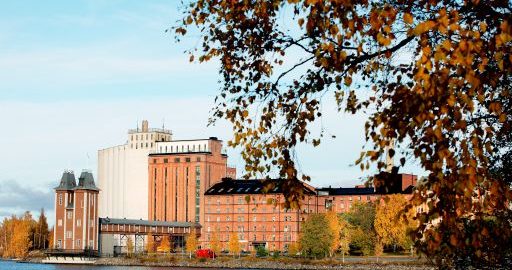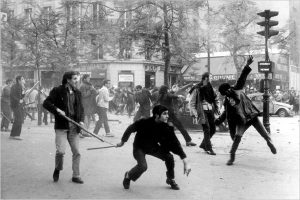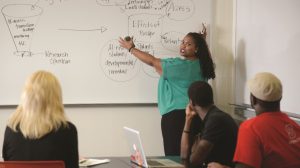In this post we will be discussing how funds are disbursed from the Ministry of Education and the impact of inadequate funding on teaching, students and research based on our own thoughts. The scope of the post is the university system. We will also propose solutions to inadequate funding of departments. In Finland, the Ministry of Finance is responsible for the disbursement of funds to the ministries including the Ministry of Education. How much fund a university gets is based on certain performance indicators, which is illustrated in Figure 1. The model is divided into education, research, and goals of education- and science policy. 39% of the funding is based on education, 33% on research, and the remaining 28% on goals of education- and science policy.

Figure 1. The (translated) model for funding of universities by the Ministry of Education and Culture, starting in 2017. The funding is dependent on education (39%), research (33%) and on goals in policy of education and science (28%). In these main themes, the most important parts are the amount of completed Master’s and doctoral degrees, amount of peer reviewed publications, and the strategy of the university.
The competition for funding by various departments of a university has become stiffer in recent times. This is due to the reduction of higher education budget by the Ministry of Finance. The obvious reason for the reduction in education budget is the poor economic situation in the country and as a result, fewer departments are selected as key areas of specialization by the university for better funding. Performance indicators such as the number of enrolled students, the number of graduated students, the number of professors and the number of publications in conferences and journals are used in guiding the administrative branch of the university in deciding the departments that will get more fund and the departments that will get less fund. The overall reduction in funding for university has had negative impact on the following:
Teaching – In order to maximize the available fund, the administrative branch of the university has taken certain measures such as increasing the responsibilities of a teacher. Teachers are now performing certain administrative tasks and it is not uncommon that teachers are teaching bigger classes of students. This has resulted in the reduction of the amount of time teachers spend on preparing classes, interacting with students and colleagues.
Student – The student financial support is cut back. This has affected students who solely depended on it for sustenance. There is increasing pressure on students to take student loan or find part-time jobs. However, the requirement that a student should earn 55 credits per year has not been relaxed.
A department can partially fund itself by doing the following:
- Collaboration – Collaboration enables individuals or departments to work together to achieve a defined and common business purpose. In the science and engineering community, collaboration between two or more departments in project such as the data driven energy science jointly awarded to scientists at Utrecht University in the Netherlands and scientists at the Jawaharlal Nehru Centre for Advanced Scientific Research in India enables the departments to access fund that would otherwise not be available to them from their respective universities. Most world top university departments are well funded yet they require collaboration from departments of other universities to speed up the project. Collaboration between departments is a very good way to prevent departments from getting too square and isolated – sharing equipment and knowledge is promoting both interdisciplinary collaboration and the department’s economy.
- Partnering with industry – Departments such as electronics and electrical departments of universities can partner with electronics industries in research and development and have access to funding. Industries can utilize the pool of knowledge in departments by partnering with them. While the industries will benefit from the pool of knowledge in the departments, the departments will be partially funded by the industry. Collaborating with companies for e.g. Master’s thesis is also a good and an easy way to partner with companies. When collaborating with a company for a thesis, they usually pay for necessary analysis and the student could even be hired for a few months to work on the thesis. This kind of experience is also valuable for the student: they have a first connection to the industry and an employed graduate is always benefiting the university.
- Public donation – A department can ask for financial donation from the public. This idea of raising fund for the department through financial donation is an financial appeal primarily to alumni and other philanthropic individuals. Other non-philanthropic individuals with high regards for education will certainly donate as a mean of promoting research and sustaining quality education for the good of the country.
- Licensing of patents – Patents that belong to a department can be licensed to companies under strict agreement. The proceed will be used to fund the department.
The funding of universities is mainly focused on results. Universities have to produce more graduates, more publications. Teachers are expected to have more skills, more students have to combine part-time jobs with studies if they have to complete their academic program. Every member of the university community is under increasing pressure of one form or the other. Therefore, as a concluding remark, we can assume to some extent that the funding policy is affecting teaching and the common atmosphere at the universities.
By Ikenna Anugwom, Lawrence Nwaogo and Jenny Palosaari, for University Pedagogics module 2, Åbo Akademi University
References:
Ministry of Education and Culture: http://minedu.fi/ohjaus-rahoitus-ja-sopimukset (23.5.2017)
https://www.uu.nl/en/news/three-utrecht-researchers-collaborate-with-india-in-data-driven-energy-science (13.06.2017)




